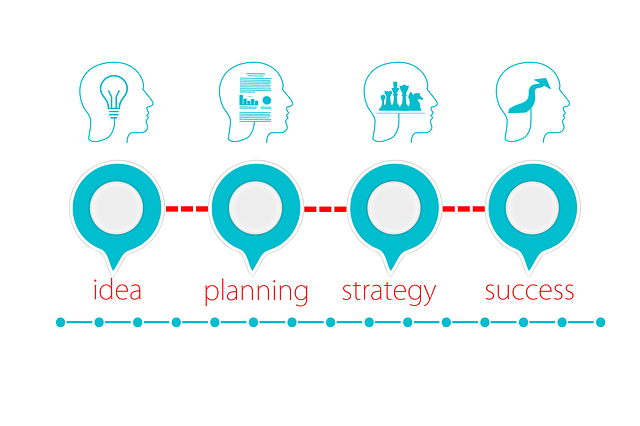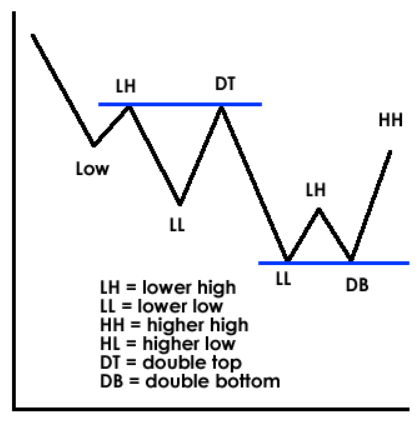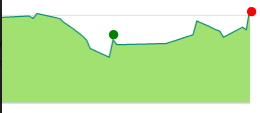Financial Market Trading Techniques Applied to Sports Betting: A Success Story from a Veteran Betaminic User

Financial market trading techniques applied to sports betting: A true success story from a long time member. 90+ points profit so far in 2020 and still going strong.
There are many different ways to use the football statistics and historical betting odds available on the Betaminic site in the Betamin Builder tool, the Betlamp tool or the football statistics page. Many users have their own approach that works for them. One of our veteran Betaminic users, Bela from Hungary, has very kindly agreed to share his betting method and how it has helped him to have success with the Betamin Builder in this interview.
Interview with Bela:
OK, before we look at exactly how your system works, we would like to know a little bit more about you.
Q: How long have you been using Betaminic and what do you like about it?
B: I signed up for Betaminic in November 2017, so I have been using it for 3 years now. I think the Betaminic Team has a great service which saves us a lot of time and hard work. Without them it would be much more difficult to bet consistently and profitably. Also they proved that the popular idea of “beating the closing odds” is definitely not the only way towards this goal.
Q: What is your betting background and what kind of betting did you do before this?
B: I started my betting journey in 2016 which was the beginning of a long learning process with many ups and downs. I mainly focused on the over/under 2.5 market and tried many different methods to make profit. Then from the end of 2017 Betaminic made my job much easier.
Q: When did you discover your winning system? Did the idea just hit you one day, or did it develop over time? Where did this idea come from?
B: I have quite a bit of experience with Forex day trading, so when I looked at the swings of variances in the Betaminic charts, they had similarities and I wanted to try out using the same technical analysis methods on them. It was a gradual thing that developed over time. I would say I went through about 3 distinct methods in its development. The advantage of football markets is that there are significantly fewer variables compared to the financial markets. It is easier to find a pattern.
Q: What do you call your system?
B: I call it the “Variance Trading System” because I take advantage of the variance swings of the different strategies on the Betaminic site.
Fig. 1 Understanding Variance: In the short term, sometimes strategy results are above their long term trend, sometimes they are below. This system tries to track that variance and take advantage of the patterns in the Betaminic strategies.
Q: How would you describe your system in a simple way?
B: I would describe it as a kind of day trading on the Betaminic charts, I am applying the same technical analysis methods to them. Buy (enter) low and sell (exit) high. Look for the right opportunities.
Q: Do you know how many points profit you have made just in 2020 using your Variance Trading System?
B: In 2020 I have made 91.20 points profit up to November 22nd.
OK, let’s look at the details of your method.
The Variance Trading System with Stop Losses for Betaminic By Bela
(Based on experience with Forex trading.)
Objective of Method:
On the Live Period (since created/shared) charts, identify the bull and bear trends and also learn to recognize the “supports” (valleys) and “resistances” (peaks). Every big loss of a strategy started with a “bearish” trend and if we are able to catch a good exit point then we can avoid many losses and also keep the profits. Good chances of profit begin with “bullish” upward trends.
Example of How to Read Charts:
Fig 2. Identifying higher highs and lower lows
A lower low (LL) is a sign of a bearish trend. A double top (DT) is a sign of resistance, another sign of a bearish trend. A higher high (HH) is a sign of a bullish trend. A double bottom (DB) is a sign of support, another sign of a bullish trend.
The method has evolved over time and it can be easier to understand the current method if you can see how it developed.
Method 1: Look for Bear and Bull Signs
Start: Follow strategies that are showing a bullish trend. Look for valleys that are now on an uptrend, which have the most chance of continuing.
Pause: Pause a strategy (i.e. switch off the e-mail alert) if the chart indicates that the bullish trend is turning to bearish.
Re-start: Check daily if the strategy continues its “bearish” trend or if goes back on track to bullish again. Look for it changing direction and reaching its previous valley again, that is when it may go up to a new peak. Look for a higher high in the trend line since paused.
Method 2: Enter after a rebound from a low. Exit at the old high. Use a stop loss.
Start: Enter when a new lower high (LH) is reached after a drawdown. Double bottoms (DB) are a good sign of trend reversal from bearish to bullish.
Fig 3. Example of uptrends after valleys with DOUBE CHANCE
Fig 4. Double bottom examples with Colossus 3
Fig 5. Double bottom examples with Pro-Home
Pause: Pause when the previous higher high (HH) from before the valley (before you entered this strategy) is reached or let it go higher and exit when one unit lost.
Fig 6. Example of Method 2 with DOUBE CHANCE chart. The green dot is the start point after a bearish trend ended and a lower high (LH) appeared. The red dot is the pause point after the strategy reached its previous high from before it had dropped. A bullish trend means “higher lows”. Look for support signs in the charts, which is usually a higher low than the one that came before.
Stop Loss: Use the current peak of the Live Period (LP) minus the Live Period’s Maximum Drawdown. (LP MDD) (e.g. If the highest high in the LP was 55 points and the LP MDD is -22 points, then a stop loss can be set at 33 points.)
Trailing Stop Loss: As a strategy’s LP peak increases, the stop loss can be increased as well. (e.g. If a strategy’s LP increases from 55 points to 75 points, and its MDD was -22 points, then the stop loss can be increased from 33 to 53 points.)
Method 3: Chart Trend Focus (Bela’s current method)
Start: Start using a strategy right after the First Profitable Day after a Trend Reversal. A trend reversal is when it is turning bullish after a bearish run. Learn the characteristics of your chosen strategies. Each has a unique trend and swings in both directions. Enter immediately when you see the first profitable day after a trend reversal.
Pause: Set a target profit at the new expected LP peak. Pause the strategy when this new peak is reached. This target will be the LP peak minus the 2nd highest LP peak. Add this expected profit to the highest LP peak to find the new expected LP peak. For example, if the highest profit peak in the LP was 50 points and then previous high profit peak was 30 points, then we can expect a chance for another 20 point increase on the next bullish run, so the target would be 70, the previous high of 50 plus the expected 20 point increase. The target point should be calculated separately each time a strategy is entered.
Restart: Wait for the next profitable day after the next bearish trend reversal.
Unique Trailing Stop Loss: Look for the biggest drops that did not end an upward trend. This becomes that strategy’s unique trailing stop loss during an uptrend. For example, on a previous bullish trend when a strategy increased from 20 to 40 points, it was not a smooth increase, but had some negative drops in that time, find the biggest drop from that increase, and set the stop loss as that number plus one. For example, if the biggest drop during a bullish trend was 7 points, then set the unique trailing stop loss at 8 points. If such a drop occurs and hits your 8 points stop loss, pause the strategy and wait for the next suitable restart point. It is very important to cut off your losses at the preset stop loss level. This is the core element of my risk management method. Sometimes it is not that simple because, for example, if I had 4 picks for the next day of a given strategy and at the same time I only had 2 points left to go until my stop loss is reached; in this case, I would make all four bets. But you could also choose to bet on only the first two of them. It depends on your own personal betting style and risk level.
Considerations for Strategy Selection:
A low maximum drawdown is important. (Lower MDD means higher stakes can be used, up to 5% max)
3 months of Live Period results is enough for consideration. Few picks in the Live Period is not important. If there is a bullish pattern with higher peaks and higher lows, we can enter with a stop loss and ride the wave. We cannot know which strategies will go bullish, but the charts can show positive indications. If there is a strategy with only three months of LP history and all the three month closed with profit, this is enough to research it closer and find a good entry point.
Study each strategy separately. There are no universal rules for entry and exit. It is better to look at the charts, LP’s max DD and, based on these factors, decide the entry and exit points. Every strategy is different from each other that’s why we need to get to know each one. But this requires more effort than just betting on the picks. Each strategy is unique and we should to handle each one in a unique way.
Stake size: Stakes can be calculated by using the Expected Maximum Drawdown figure (EMDD) added to the average weekly number of picks, divided by the betting bank. You can calculate the EMDD using this Excel file. It requires this information: number of bets, yield, average odds, average bet size (which is 1 at level stakes). Then to calculate the stake size, we also need to know the number of picks per week that we want to support. If you find that the EMDD of the whole strategy, not just the LP, is 25 points, and the strategy has about 20 bets per week, then we add them together to get 45. A 100 point bank divided by 45 gets about 2 points per bet or 2%. This is a sensible amount to stake. I do not like to bet more than 5% of my betting bank on one event.
Apart from the Excel file, we recommend reading the following article by our colleague Miguel Figueres to know in detail important indicators for the bettor such as the P-Value and Maximum Expected Drawdown. You can find other articles of interest in the blog “The Value Betting Blog”.
Example of Entry Points
Fig.7 The LP chart of DOUBE CHANCE
Here we can enter after a drop when the trend is beginning to come out of a valley.
Summary of Variance Trading System Methods
| Method 1:
Bulls and Bears |
Method 2:
Drawdown Rebounds |
Method 3:
Chart Trend Focus |
|
| Start | Follow strategies with bullish trends. (Valleys that are now on an uptrend.) | Enter after a drawdown, when a new LH (lower high) is reached. | First Profitable Day after a Trend Reversal: Learn the characteristics of your chosen strategies. Each has a unique trend. Enter when you see the first profitable day after a trend reversal. |
| Pause | Pause strategies that turn bearish or if it reaches the stop loss. | Follow until the previous peak is reached, let it continue and pause when one point is lost. Also, pause if it reaches the stop loss. | Set target profit at the new expected LP peak. Pause the strategy when this new peak is reached. (This will be the LP peak minus the 2nd highest LP peak. Add this expected profit to the highest LP peak to find the new expected LP peak.) |
| Restart | Monitor for the bull trend returning. Restart when the bull trend appears again. | Wait until after the next drawdown to restart. | Wait for the next profitable day after a trend reversal. |
| Stop Loss | Stop Loss: Use the current peak of the Live Period minus the Live Period’s Maximum Drawdown. (e.g. If the highest high in the LP was 55 points and the LP MDD is 22 points, then a stop loss can be set at 33 points.)
Trailing Stop Loss: As a strategy’s LP peak increases, the stop loss can be increases as well. (e.g. If a strategy’s LP increases from 55 points to 75 points, and its MDD was -22 points, then the stop loss can be increased to 33 to 53 points.) |
Unique Stop Loss: Look for the biggest drops that did not end an upward trend. This becomes that strategy’s unique trailing stop loss during an uptrend. | |
| Strategy Selection | MDD: Low Maximum Drawdown (MDD) is important. A lower MDD means higher stakes can be used, up to 5% max.
Data: 3 months of Live Period (LP) results is enough for consideration. Charts: Study each strategy separately. Look at the charts, the LP MDD, and based on these factors decide the start and pause points. |
||
| Stake Size | Calculated as the Expected Maximum Drawdown (EMDD) plus the average weekly number of picks divided by the allotted betting bank. | ||
Q: Would you apply different methods to different strategies based on their Live Period chart, or do you recommend method 3 as the best one to use for all strategies?
B: Method 3 is basically that, using custom entry points and trailing stop losses for each individual strategy. So I would recommend trying to use method 1 or 2 as a general method until you know your chosen strategy charts better, and then try method 3 with a customized plan for each strategy.
Q: Of the 3 methods that you have used so far, method 2 seems to have a bigger potential upside since there is no upper cut-off point. Do you think it is ok to continue until the trailing stop loss is hit, as in method 2, or do you strongly recommend having an upper exit point when a target profit is reached as in method 3?
B: I suggest using either method according to the bettor’s risk-taking level. I observed that most of the strategies have rhythmic uptrend swings with each one’s unique profit level. I calculate the profit target level from the last uptrend, which is basically the minimum expected profit for the current momentum. When I reach this level I am quite satisfied and take the profit. It is important to make profit, but it is more important to keep the profit.
Q: Which strategies are you following, and which are you monitoring now?
B: Currently, I am following 3 strategies: DOUBE CHANCE, Colossus 06 Scoring Away Overs and Pro-Home (I am following the last two with double stakes). Currently, Pro-home is on pause since November 7th and I am waiting for an entry signal in the charts by monitoring it everyday. I think it is better to focus on some good strategies rather than too many. In this way you can use higher stakes with the right risk management method. Always use a stop loss because you never know which strategy will go into a deeper drawdown than previous levels. Other strategies that I have used in the past, but am just sometimes monitoring now are Colossus 01 Home Dog, Colossus 02 Value Overs, Colossus 03 Free Scoring Favourites, Colossus 05 Against the Trend Overs, Colossus 07 Two Bulls Draw, CS22 Strong Home Team Meets their Match DNB (A bonus strategy from Tom Whitaker), Pro 1 Away Day Blues, Pro 3 Home Blanks Away Scoring v2, Pro 6 Against the Trend Overs v2, Under Home Underdog and Away Winner Streak, Draw 4 Over, 2-3 (Sebisy), double chancee (kerempi), HOMES YENI SHARE, The Rocket Strategy.
Q: When you say “double stakes”, do you mean double the amount suggested from your EMDD + picks / bank calculation? And can you tell us your % stake for DOUBE CHANCE, Colossus 06 and Pro-Home at the moment?
B: Currently one unit is 2% of my bankroll, so double stakes means that I bet with 4% on those picks (So currently, 2% for DOUBE CHANCE, 4% for Colossus 06 and 4% for Pro-Home). Because of the help from using stop losses, I can reduce the drawdowns of the strategies. For more conservative bettors I suggest the EMDD calculation for the suitable stake sizing.
Q: What kind of starting out advice would you have for people who want to use this method?
B: Learn to read the charts. This is the most important thing to those who would like to try this method. You can learn this skill by the help of many sources (just search for “chart patterns”). Then you can identify the same patterns on the Betaminic charts and you can take action when a good opportunity comes.
Q: Are you developing this strategy still further?
B: Yes, in fact I am trying to make profit on the bearish runs, too. I am trying out backing the opposite result to the picks during bearish runs and backing the picks during bullish runs. It is still early days, but the results look interesting. In this way I can always be in the market with a chance for profit. On a betting exchange, you could lay the strategy picks during bearish runs.
Thank you for letting us interview you and telling us about your betting system that you have had success with on Betaminic. We hope you continue to make profit!
7 Ways to Use Betaminic
Thanks to Bela, we now have yet another way of using the football data on the Betaminic site to find profitable betting methods that we can add to our betting academy. Here are some more of the ways that you can find success with Betaminic.
1 Your Football Knowledge. Convert your gut feelings about football into statistics backed profitable strategies using the filters in the Betamin Builder tool. Read more here about:
How to create winning strategies with Betaminic
How to follow those strategies without making any of these 5 common mistakes
2 Value Odds. Find patterns of value odds that beat the bookie over the long term.
3 Trading on Betting Exchanges. Use the Betaminic data to make the right selection method for your trading system for betting exchanges like Betfair, Betdaq, Matchbook, Smarkets, etc.
How to make money on the betting exchanges
4 Long Term Trends. Another way to find long term trends and avoid data mining is this research method of splitting the data into Research and Test Periods
How to avoid data mining when researching long term trends
5 Follow Existing Winning Strategies. Look on the Public Strategies page in the Betamin Builder Tool to see strategies shared by others that are in profit over the long term. The best strategies are ranked at the top thanks to Betaminic’s unique rating system. Many strategies have been going for years and are still making profit.
5 great public strategies to follow
6 Get Inspired. Read the blog articles, betting academy guides or the free Betaminic book to get inspired. You may see something that triggers a spark and gives you an idea to create a great new strategy. It will also give you the tools for success with big data betting.
7 Apply Your Expertise. And just like Bela has done with his Variance Trading System, apply your own special skill set to create winning methods to apply to the strategies. If you have experience with statistics, trading, bookmakers, betting exchanges, value spotting, sports science, data analysis, and so on. You can use your unique perspective to get success.
We listen to you. If you have any suggestions write us to su*****@*******ic.com








Comments 0
Nick
October 26, 2022This is a wonderful article. I wonder if there is any update on Bela’s journey with this method? I’m particularly curious about whether the idea of laying odds on the “Bearish” downturns of our winning strategies bore fruit?